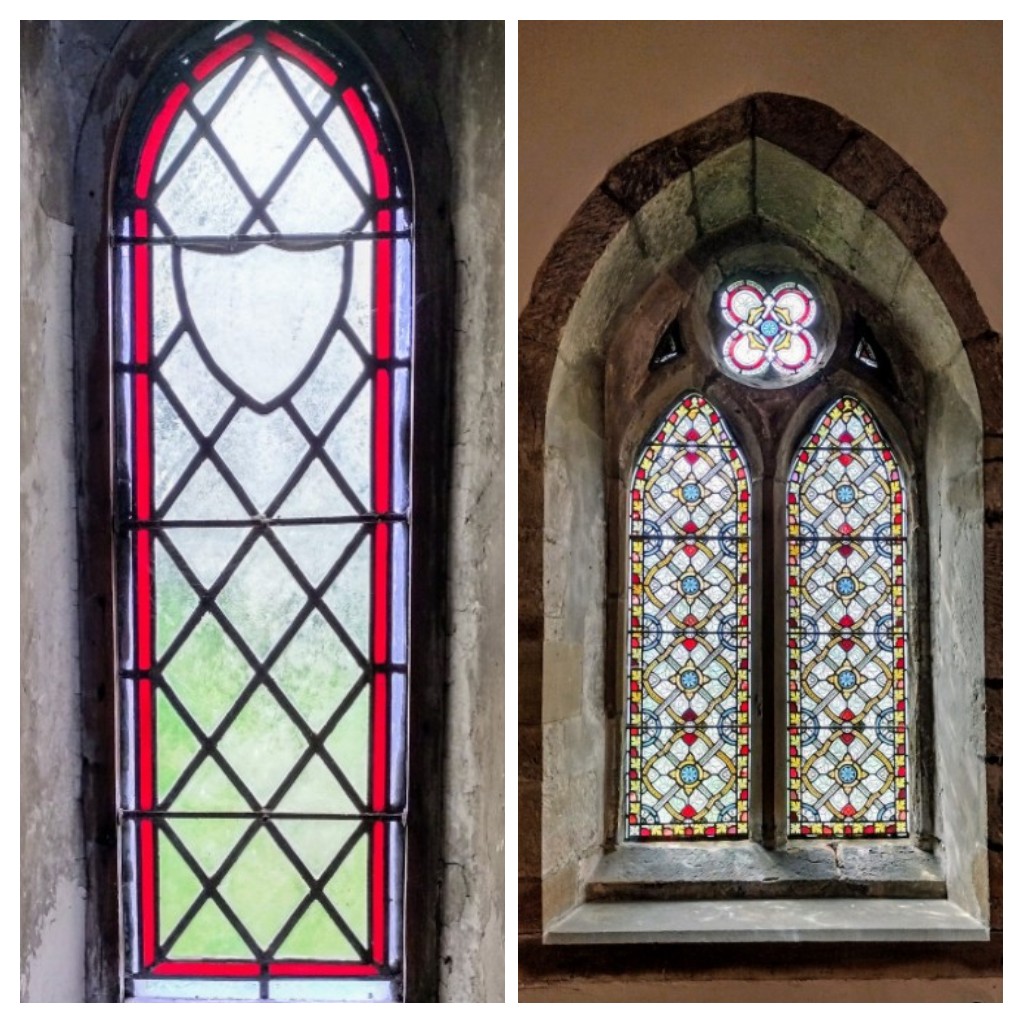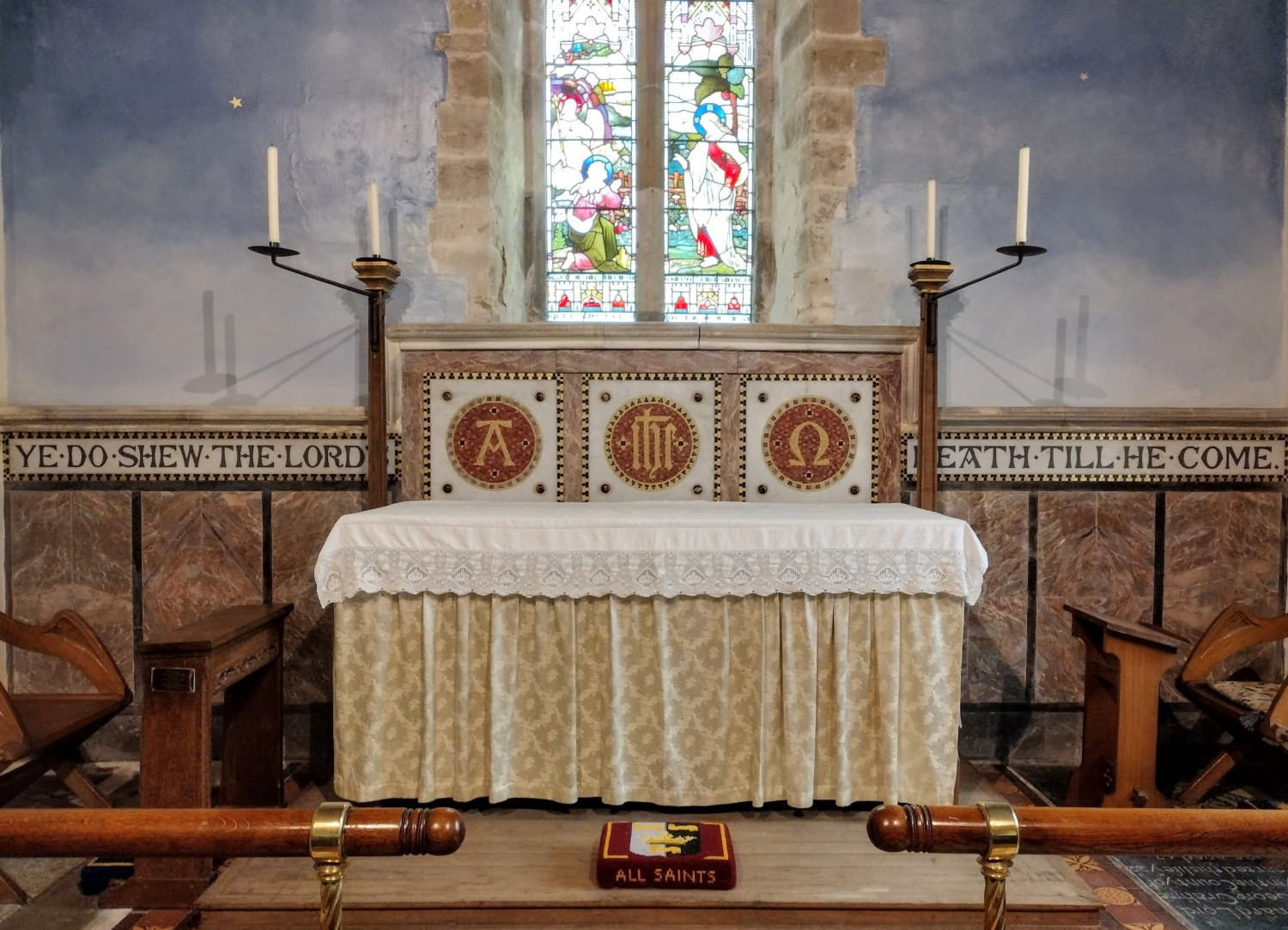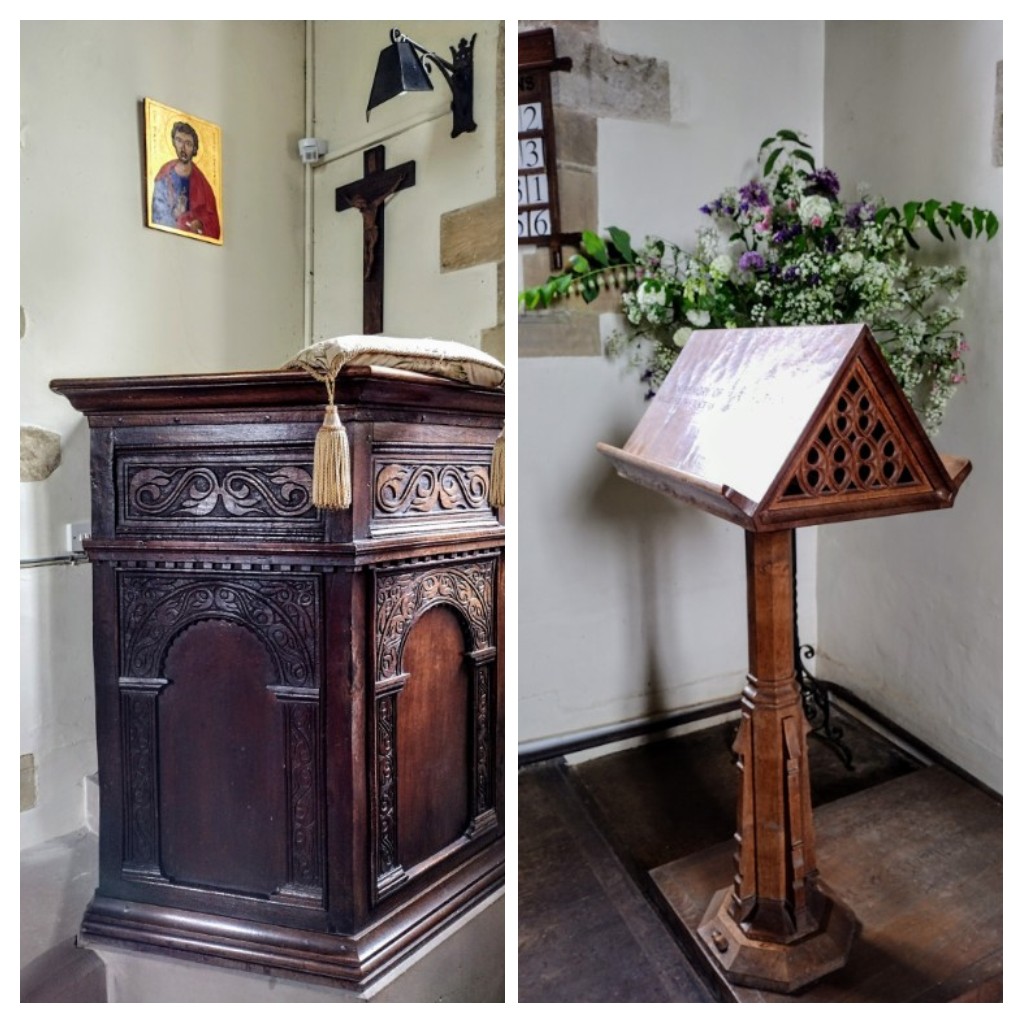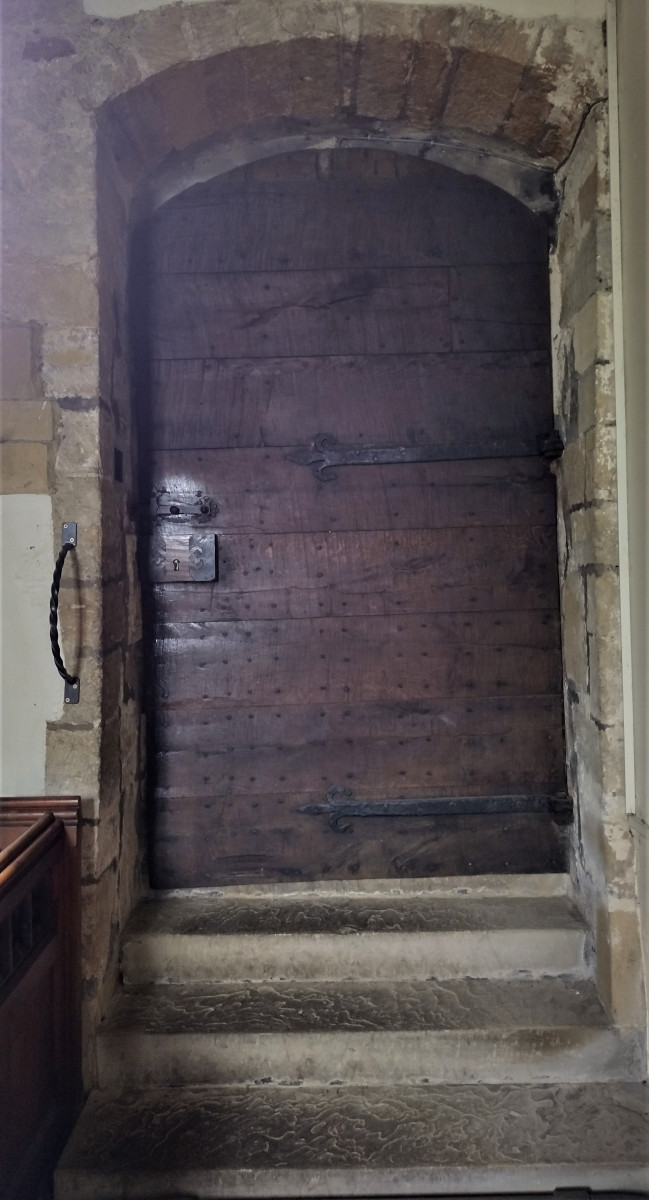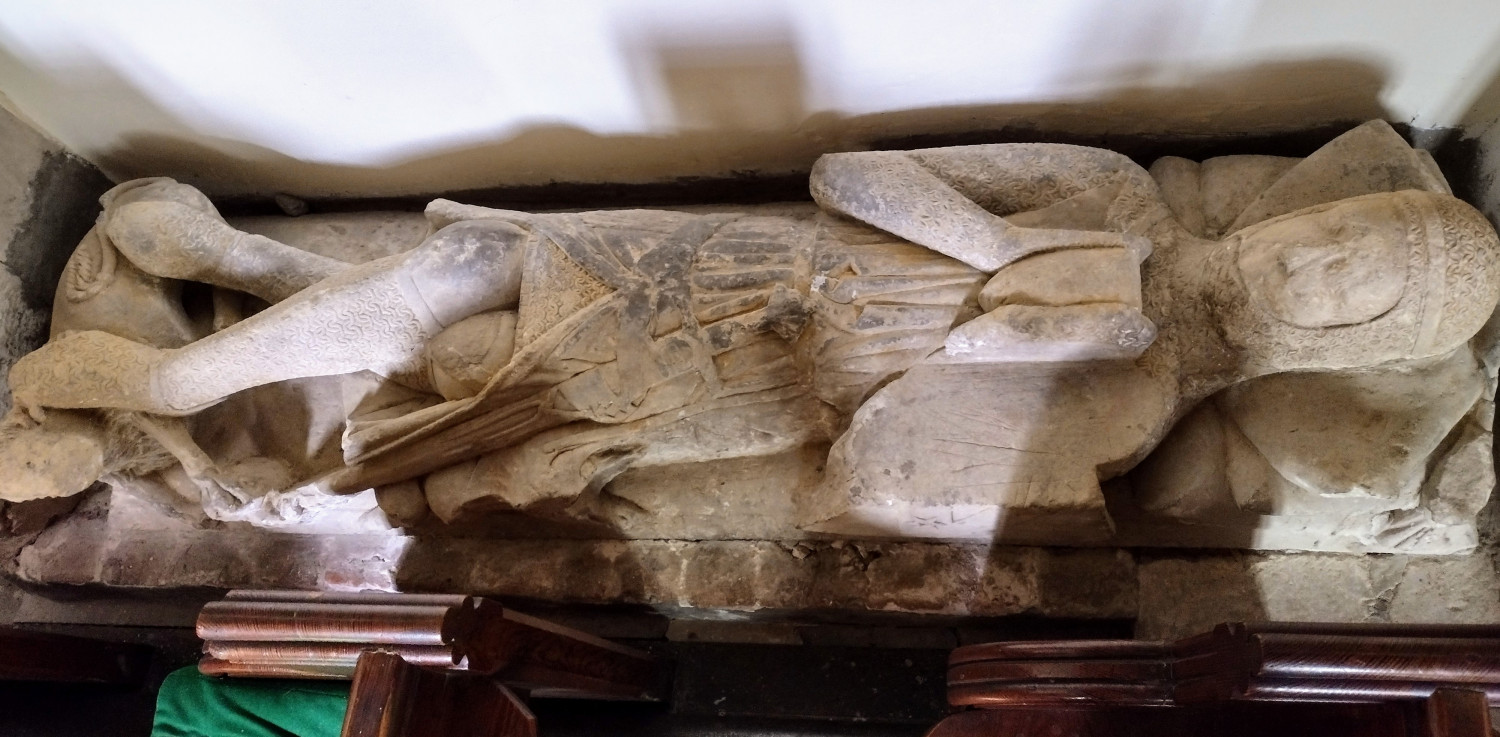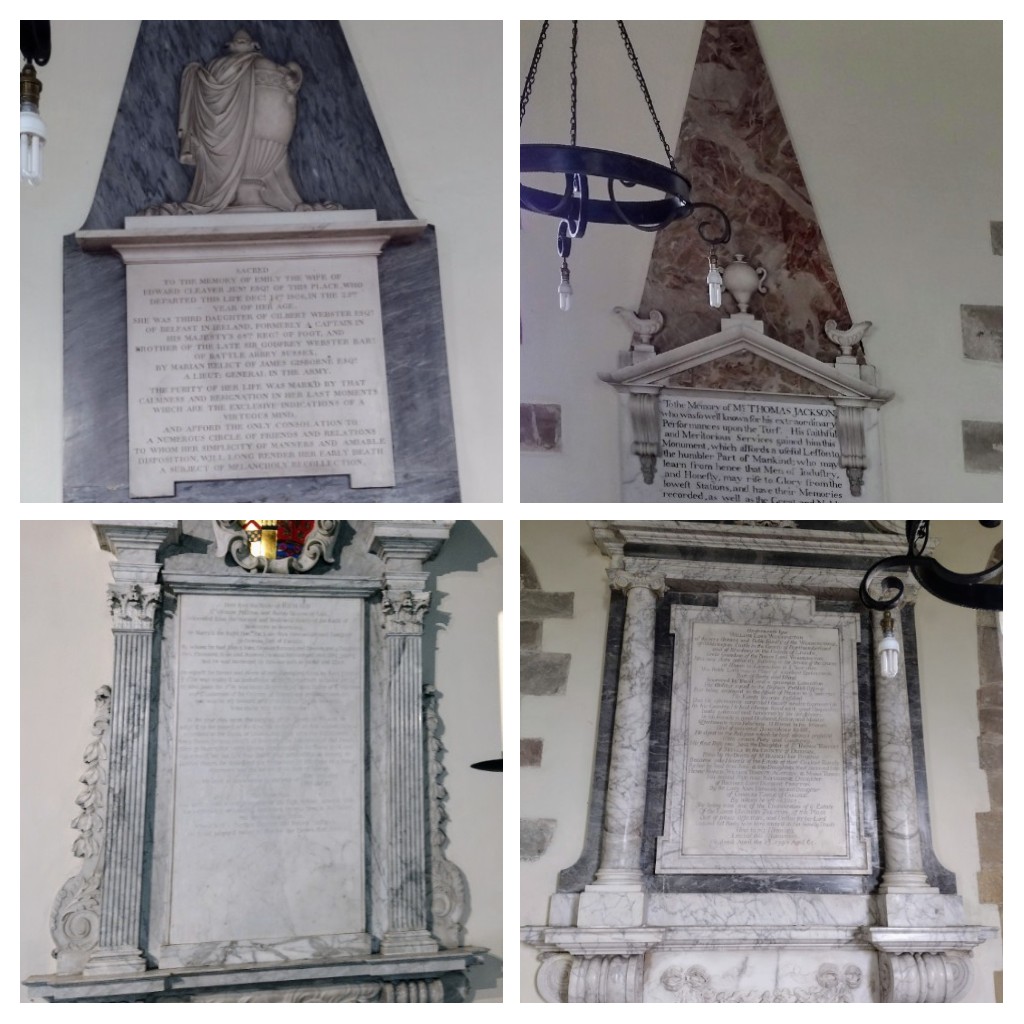|
|
All Saints and St James, Nunnington The present church of All Saints and St James (an unusual double dedication dating from very early days) was built mainly in the 13th century, though parts may go back to the 12th century, including two small lancet windows. The chancel arch, the three doorways and the tracery of the East window and those of nave and chancel belong to the latter half of the 13th century. Perhaps the church was begun in the 12th century, left unfinished or destroyed by fire, and completed in the 13th. The first of the Rectors whose name we know, John de Barton, was instituted in 1287, presented by Sir John de Stonegrave. But he was not the first incumbent, for before that date there was a dispute in the King’s Court at Westminster about the right of presentation. Though Nunnington is mentioned three times in the Domesday Book we cannot yet be certain whether it possessed a pre- Conquest or Norman church prior to the present one. But two fragments of a cross (or crosses) - to be seen in the church take us back to the 10th – 11th century, and suggests a cross standing in the pre- Norman churchyard which is known to have existed. The manors of Nunnington and Stonegrave have been linked from early times, and we know that a church stood in the latter village as early as the 8th century, when it is first mentioned. |
 |
Restorations In 1682 Ranald Graham, lord of the manor, with his wife Susannah, restored and completely refurbished the church which had evidently, like so many others, fallen upon evil days during the Civil War and the Commonwealth period(1649 - 1660). He also rebuilt or completed the Tower and the Porch. In 1883-4 (during the early days of the long incumbency of the Revd. William Collins) the church was thoroughly repaired and refitted, mainly through the generosity of the Rutson family. |
|
|
SOME NOTABLE FEATURES: Woodwork The 17th century Pulpit (This had been painted yellow at some time prior to 1884). Unfortunately, through a misunderstanding much of the 17th century woodwork disappeared in 1884, including the sounding board, altar rails, panelling and all the old pews except one now in the belfry. The 1672 Altar may be seen in the Vestry. The original oak (South) door, with mediaeval fleur- de- lys hinges. The modern oak Lectern and West Screen, both by Thompson of Kilburn. |
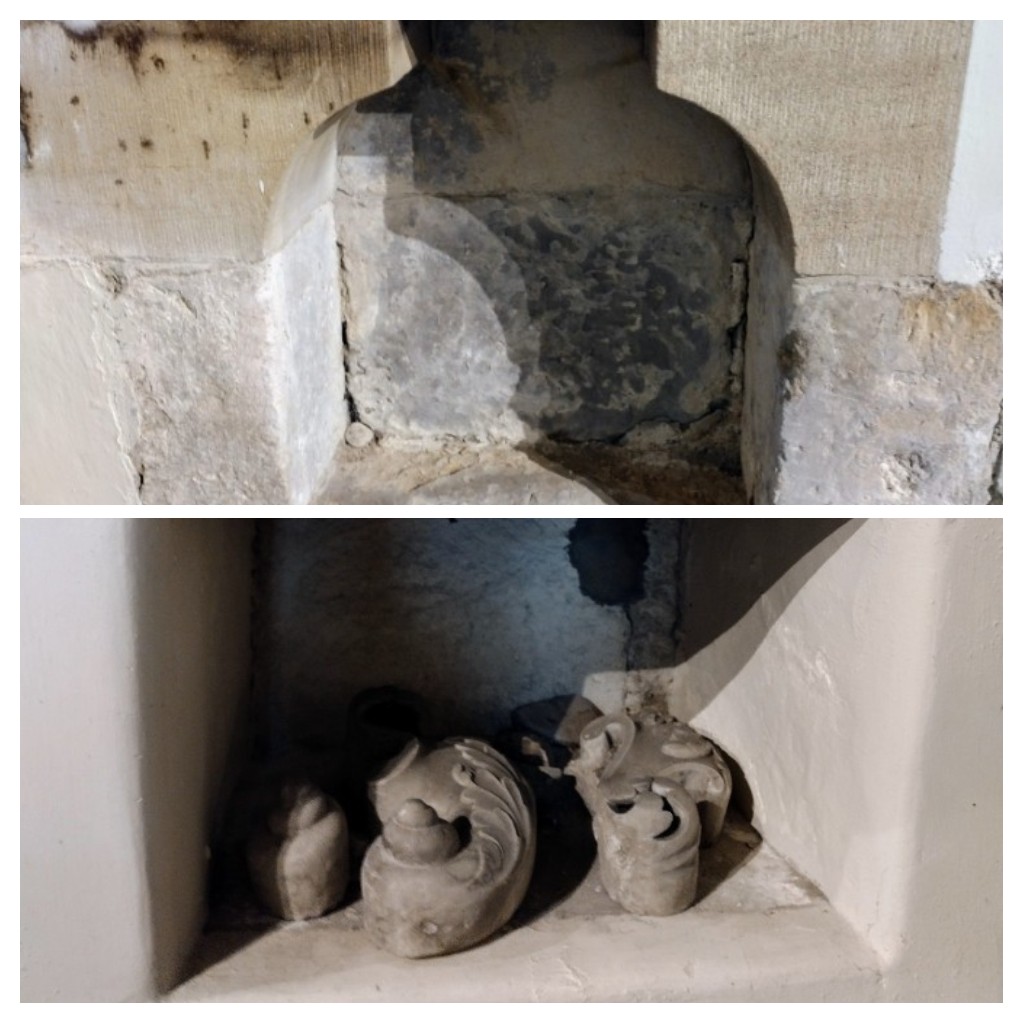 |
Stonework In addition to the Anglo – Danish cross fragments already mentioned, the Piscina and the Aumbrey, in the South and North walls of the sanctuary respectively. The Font, of an unusual design, may have been the work of a local mason at the 1672 restoration, with an oak cover of the same date, replacing the original font which was possibly destroyed during the Commonwealth period. |
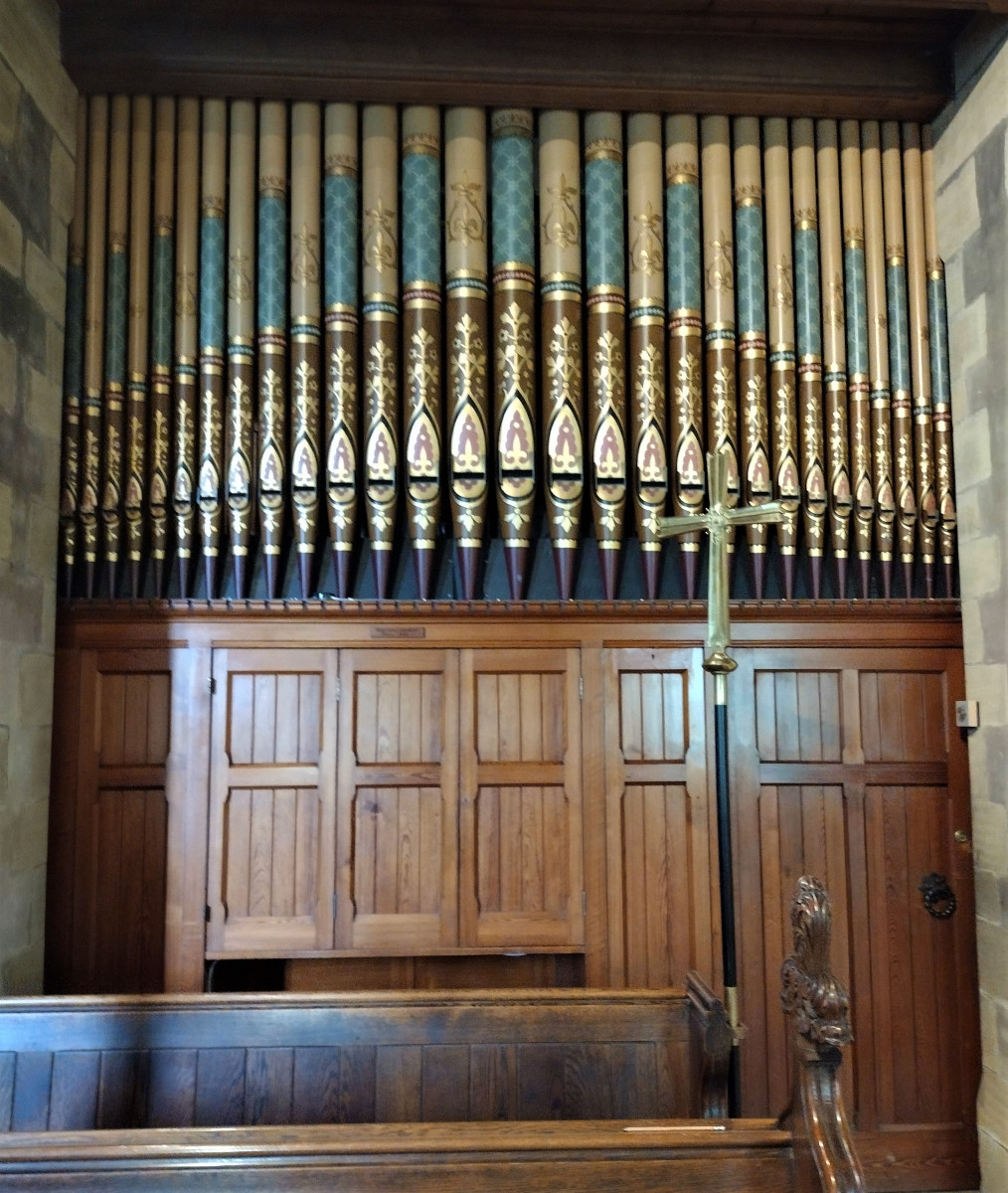 |
Organ Erected in 1885, the gift of John Rutson, designed by Professor Charles Villiers Stanford. |
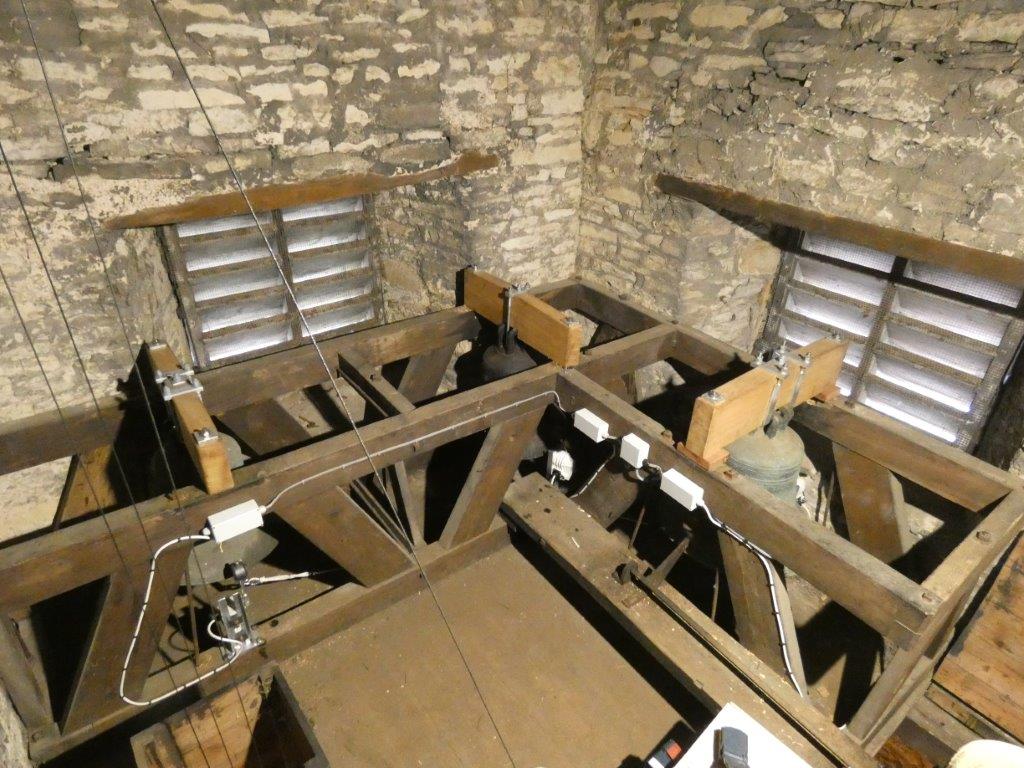 |
Bells
These were re- cast from pre – Reformation bells. |
|
Registers These date from 1539. |
|
|
|
Monuments include Sir Walter de Teyes, Lord of the manors of Nunnington and Stonegrave from 1295 until his death in 1325. Thomas Jackson, a very successful jockey. |
Header Text
Footer Text

